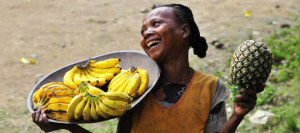
The culinary diversity of the red island
The cultural and geographical characteristics of Madagascar are also reflected in Malagasy cuisine. Of course, first and foremost, the yields of Madagascar's Crops the typical eating habits of the country. Especially Rice plays a major role in the daily diet of the population. Although Madagascar has many poor regions, the cities have developed into a considerable restaurant culture can develop, where Gourmets and Lovers of natural food get their money's worth. These can be visited for example at Tours through the North and the Vanilla Coast, where Antisiranana and surroundings or also Nosy Bé and the surrounding dream islands can be explored and numerous established restaurants can be visited. Basically, two main currents dominate in culinary terms: international and French cuisine and traditional Malagasy cuisine.
The international and French cuisine
The international and French cuisine offers visitors from Europe few surprises, but first-class quality. The climate offers the possibility fresh fruit and vegetables all year round to harvest. Most of the products also come from organic cultivation. With the cultivation of the potato, French fries became a popular side dish, even among locals. In coastal regions, in addition to a rich offer, restaurant visitors can enjoy various edible fish also about Lobsters, crabs, shrimps and prawns directly from the sea. In addition to European influences, Madagascar's menus are also dominated by dishes from Asia and other Creole regions. For example, the actually Indian samosasThe "madagache" are small, triangular dumplings filled with vegetables, fish or meat and then fried in hot fat. An extremely delicate and satisfying street food, they have become a popular dish in their infinite variations available in almost all local markets.
The traditional Malagasy cuisine
Traditional Malagasy dishes are far less spicy than those from other African regions. Rice serves as a filling side dish at any time of day, so that up to 700 grams of rice per capita are consumed daily in Madagascar. The food is usually prepared over a charcoal fire on the veranda or a cooking corner inside the house.
A popular and arguably common breakfast with Madagascar's highlanders is Vary amin'anana. The basis is rice, which is served with eggs, meat or honey. Often, leftovers from the evening meal can be used in this way. Rice also forms the basis tasty doughnut baked in fatThese are popularly known as Ramanonaka and Mofo Gasy. It is not drunk with coffee or tea, as is customary here, but Ranoyla, a decoction that is produced when the burnt sediment in the rice pot is boiled up with water: Ranovola is pale yellow, slightly cloudy and tastes decidedly bland. However, it is considered very healthy and has a calming effect on an upset stomach.
Especially the Zebu on Madagascar provides the basis of many traditional meat dishes. The zebu is a type of cattle raised on the red island - as well as in other tropical areas. A special delicacy is for example Lelan'omby sosy, Zebu tongue with ginger and tomato sauce, an unusual for European palates, but extremely tasty combination, powerful flavors.
The dishes are seasoned mainly with wild growing native herbs or also a typical Malagasy broth. Zebu meat, in addition to a particularly large variety of herbs, is also the basis of the very tasty Romazava. This broth is also known beyond Madagascar. There are great regional differences in the preparation of the broth, so that it is a new taste experience every time.
Also Cassava, in South America also Tapioca as a particularly low-maintenance, robust tuber has become a popular ingredient in Malagasy cuisine. It thrives in all tropical regions and can be used universally in the kitchen. Raw cassava roots are inedible. They are therefore usually served grilled or boiled. To preserve the tuber for a long time, it is usually processed into flour. From this in turn Croquettes and doughnuts, but also cakes produced, which European palates can enjoy very much. Unlike potatoes, for example, cassava can be eaten even the fresh leaves of the plant. Usually, these are crushed and then cooked.
Traditional meat dishes from the red island
A typical combination of these ingredients can be found in Ravitoto, a hearty stew made from cassava leaves and pieces of meat. Ravitoto is served with Rice and chopped and spiced tomatoes and thus unites the national colors of Madagascar - green, white and red - on the plate! This dish is especially popular with beef. However, since the preparation of this Malagasy national dish in this case requires several hours, it usually has to be pre-ordered in restaurants. But after this long cooking time, the meat is particularly tender and remains juicy in the spicy broth. Faster to prepare is the Stew with pork. The henakisoa sy ravitoto is therefore particularly common on the menus of Malagasy restaurants. Very similar to the ravitoto and also classic in the cuisine madagache is the henakisoa sy anatsonga, a stew of pork and various culinary herbs.
Besides zebu, pork is the main source of protein in Madagascar's cuisine, since dairy products are rarely consumed. Pork is served, among other things, with white beans (as Henakisoa sy Tsaramaso), or also as a Shank with fresh green peas (Tongon- Kisoa sy petits pois) offered throughout the year. Sofin-kisoa sy voanjobory, pig's ears with bambara beans, is also an extremely popular dish among locals.
Very tasty and also particularly strong with Garlic and black pepper seasoned are the Saosisy, small sausages that enrich the displays at every Magadasian butcher's stand in long chains. They are very reminiscent of our domestic Bratwursts and are very popular with both Malagasy and visitors to the island nation.
Meat processing directly on the market
The processing and also the handling of meat in Madagascar is fundamentally different from what is usual in Europe. Thus, the relationship between man and animal may seem almost crude and brute to the European visitor. Unlike in our country, the slaughter of farm animals is not done behind closed doors, but in public, usually directly on the market. The animal is also subsequently slaughtered in the open air. disassembled before the eyes of customers and sold directly. However, this practice, which is repulsive for Europeans, has the immense advantage that the meat is only ever offered in the quantities in which it is actually in demand. Overproduction and spoilage of the meat, which unfortunately can hardly be avoided in our country, thus do not take place. Especially the latter may surprise the visitor of a Madagascan market: Meat and sausages are offered at the stalls without appropriate cooling. Especially in the hot season, it is therefore impossible to prevent flies from settling on them. This aspect is admittedly highly unhygienic in our eyes, but in Madagascar the meat is sold and processed faster than is commonly the case here. Also Meat purchases only for the day made. Buying in stock does not take place with meat products. The flies are therefore primarily a visual, but by no means a qualitative flaw. During processing, the bleeding is also carried out very conscientiously and with extreme meticulousness. Meat consumption in all parts of Madagascar is thus harmless to health. Attention should still be paid to this, to consume only cooked meat.
Fish dishes from Madagascar
Fish lovers also get their money's worth with the typical Malagasy cuisine. The Variety of fish dishes and types of fish served is almost limitless in the coastal regions. An unimaginable number of fish and seafood are offered there in countless variations for purchase and consumption. Particularly appreciated in Madagascar, however, is the meat of the Tilapia, an African cichlid fish. Shrimp is also a favorite. As Ravimbomanga sy patsa kely, they can be found with sweet potato leaves in restaurants. However, fish and meat are often simply combined. Dishes that are also known in our country as Surf 'n Turf are extremely popular among the Malagasy. For example, pork is often served with eel in tomato sauce as henakisoa sy amalona, and pork with crayfish (henakisoa sy orana) is a traditional dish once reserved exclusively for the ruling classes.
Fruit and vegetables
Because fruits and vegetables thrive year-round in Madagascar's tropical climate, they can be eaten fresh all year round and at a excellent quality are offered. The large selection of different fruits is partly due to Madagascar's colonial past. Among other things, the French were able to cultivate the apple tree in the areas of the Malagasy highlands. Pears are also a typical European fruit, which is cultivated in Madagascar in numerous varieties. Only fruit that requires frost to flower, such as our native cherry, cannot grow in the warm, tropical climate of the red island. This does the Variety of fruits and vegetables but this does not detract from the quality of the fruit. Physalis, also known as Cape gooseberries or pok-pok in Madagascar, are mainly grown in the Fianarantsoa area. The pleasantly sour tasting fruits are offered for sale by the kilo and at a ridiculous price. The strawberries, which are only available in summer, are available in Madagascar all year round in perfect quality. Almost every front garden in Madagascar has a papaya tree. The fruits are harvested ripe as usual in our country, but also half ripe, then grated and steamed to make a salad. The leaves of the plant prove as a tea as an effective remedy against malaria. The popular pineapple can of course also be found in Madagascar. The typical for the island Victoria or "mountain pineapple" called fruit, is much smaller than the representatives we know from the domestic supermarkets, beats this by their particularly intense and fruity taste however, by lengths. Largely unknown to us but also extremely tasty is the corossol, a fruit from the Anonaceae family like the related cinnamon apples, ox hearts and chirimoyas. Jackfruit, typical of Africa, can also be harvested year-round in Madagascar and are impressive in size and weight. Since these spoil particularly quickly when ripe, they can only be enjoyed in tropical climes, quite fresh.
In addition, not to be forgotten are the wonderful edible mushrooms that the red earth produces. In fact Madagascar chanterelles almost red color - but just as delicious as our native "Schwammerl". In the months of January to March along the RN 7 in the highlands they enrich almost every Malagasy dish in the most excellent way. Also excellent porcini mushrooms are offered and are here warmly recommended. The famous RN 7 can be used within the framework of different Tours south be traveled.
Tip: Banana flambeé - flambéed banana - is probably the most typical dessert in Madagascar. The bananas, marinated with plenty of butter, cane sugar and rum and then flambéed before eating, are the crowning glory of any dinner!
Drinks in Madagascar
In Madagascar is every drop of clean drinking water very precious. Drinks are therefore primarily used as thirst quenchers and not as stimulants. Mineral water from the 1.5 liter bottles used worldwide is a luxury that most Madagascans cannot afford. However, travelers should resort to it. It provides the the only recommended source of drinking water dar - if you want to be absolutely sure, take it also for brushing your teeth!
Soft drinks are available in Madagascar in a surprising variety: In addition to the classics such as Coca-Cola and Fanta (which are predominantly bottled in 0.33 and 1 liter bottles, respectively), there are also local soft drinks: Classico is a Malagasy cola variant, and there are also various orange, lemon and currant sodas. Another popular drink among locals is Bonbon Anglais, a water-clear lemonade with a taste reminiscent of Red Bull. In addition, Malagasy variants of bitter lemon, tonic water and sparkling water called "Crystal" are also available. All beverages without alcohol are sometimes available under the name "Hygienic Beverages".
As particularly helpful for gastrointestinal upset is the Medicinal water Rano Visy, a highly bicarbonate water from Antsirabe, a former spa in the highlands that can still be visited on one of the tours along RN 7.

Alcoholic beverages
Beer is one of the most popular alcoholic beverages everywhere in the world and thus also in Madagascar. For many years, the STAR brewery, located in Antsirabe and Antsiranana the Three Horses Beer brews, holds a monopoly position. The Three Horses Beer, known as THB, which at 5.4% vol. is a little stronger than average beers on the German-speaking market. The brewery has even launched a beer with 6.2% vol. in the "Special" variant. The THB "Lite" with 3.0%Vol rounds off the range.
Unlike in our country, beer in Madagascar is sold in 0.65 liter bottles, 0.33 liter bottles and rarely in cans. Although (not according to the German Purity Law). Brewed from corn, THB tastes practically exactly like our domestic beers and is very pleasantly hopped.
Only since 2011 has the star brewery had a significant competitor. The year is remembered by the locals as Year of the beer war, when an interest group of local investors (supported by foreign financiers and their expertise) in the city of Ambatolampy established the SKOL- Brewery was founded. Since then, the competition has been giving the previous monopolist a hard time. SKOL, offered in a slim, "modern" 0.5 liter bottle, has already been able to establish itself in large parts of the country thanks to a particularly effective distribution network.
Wine and spirits
In the tourist centers, you can buy mainly imported wines, mostly from South Africa. Although both white and red wines such as the "Cote de Fianar" or "Grand Cru d'Antsirabe" are grown in the highlands, they cannot compete with the imported wines in terms of taste. An exception is the sweet wine from the area of Fianarantsoa. Rum is one of the better known export items of the red island - and enjoys great popularity among the population! Both white and brown - in an unmanageable variety, the sugar cane liquor is sold everywhere and in all bottle sizes. Special mention should be made of the Top product Dzama 12 ans, a 12-year-old rum from Nosy Bewhich you can only get with very good connections. An insider tip from the east coast is Lychee liquor, wonderfully mild and fruity - and also only available with relationships. At Tours and Individual travel at the northern east coast With a little luck, you can get your hands on a bottle or two of these typical local specialties. Another typical specialty is the so-called Rhum arrangeés, which can be found in large-bellied balloon bottles behind the counter of almost every restaurant. The rum is mixed with pickled fruits, vanilla beans, Fine cocoa and chocolate or Coffee from Madagascar flavored and a tasty digestive to a Malagasy menu. Particularly exquisite are the products in the respective growing region. For example the Masola Peninsula and the Vanilla Coast or northern east coast.
Coffee and tea
Coffee - although not originally native to Madagascar, the Malagasy can nevertheless boast of a peculiar mastery in the preparation of this beverage. The Coffee from Madagascar impresses with its strong and intense aroma and its very dark (practically inky black) color. The finish light and a Pleasure for every connoisseur of good coffee. This extraordinary flavor unfolds through the special and loving roasting of the raw coffee beans. These are roasted with a little cane sugar in a pan over a coal fire, which causes the sugar to caramelize. The roasted coffee beans are then not ground, but crushed in a hardwood mortar. Filtered through a cloth bag, the Madagascar coffee unfolds its incomparable taste.
Tea has also become native to Madagascar, albeit hesitantly. Some small plantations near Fianarantsoa, produce excellent tea, partly according to the strictest ecological criteria. Fianarantsoa can be visited for example at a Individual trip along the madagascan East Coast be visited. Since the Madagascans themselves hardly drink tea, most of the tea grown there is exported. It is hardly offered on the domestic market. Most of the tea served in restaurants is imported from the Far East. One exception to this is the Islamic, partly Arab residents of the west coast - in their everyday lives, tea plays a much more important role as a traditional beverage. One can fixed travel book, where Madagascar's West Coast - The splendor of the slopes get to know and taste the particularly delicious tea.

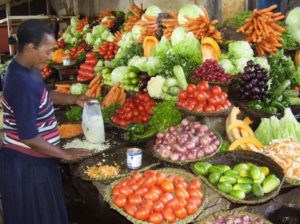
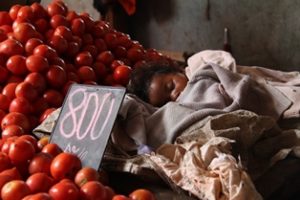
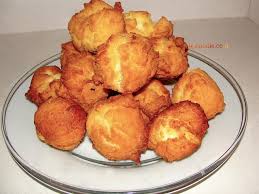
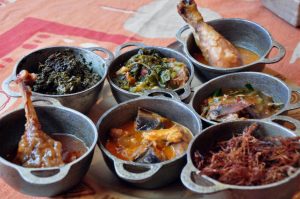
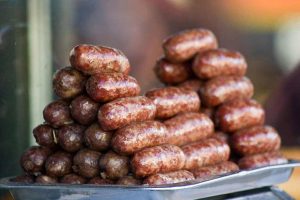
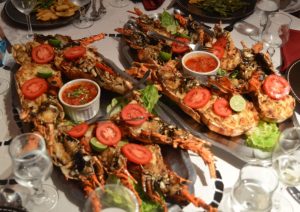
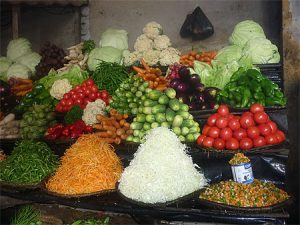

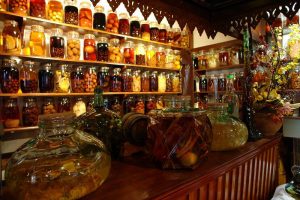
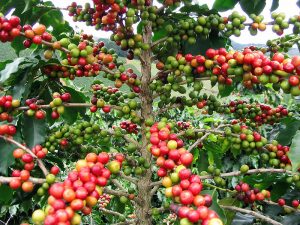


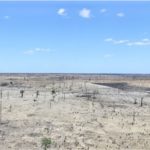


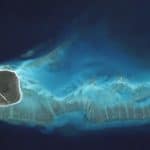
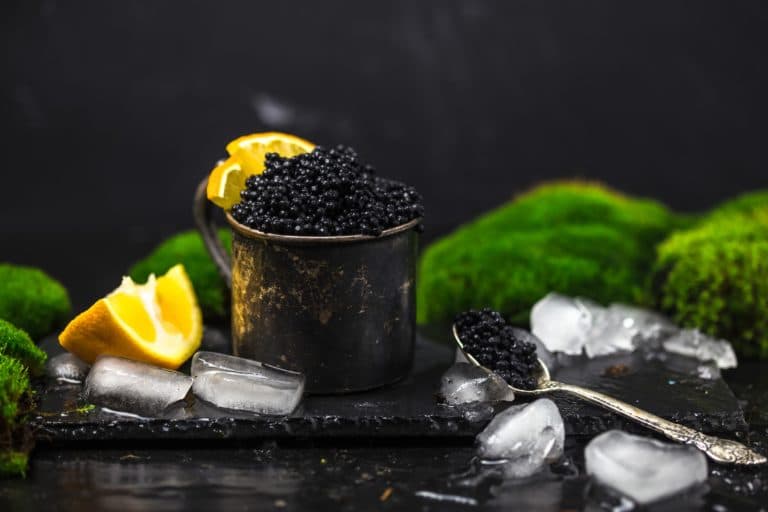
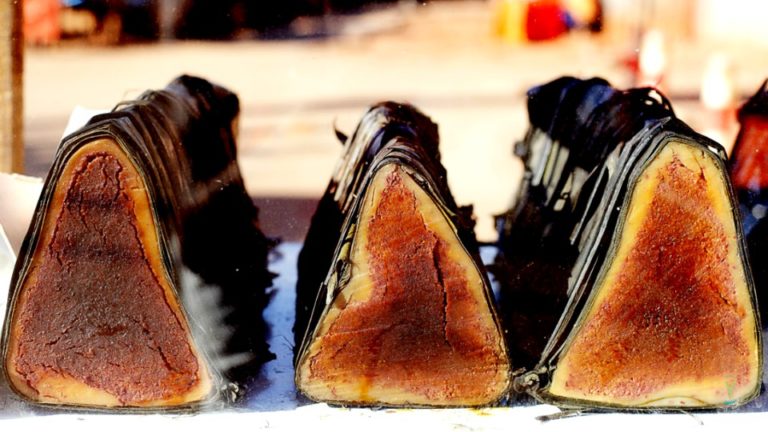
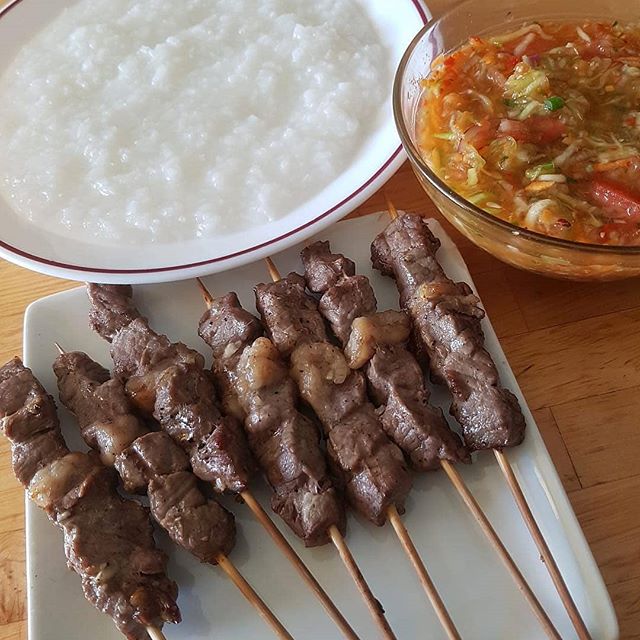

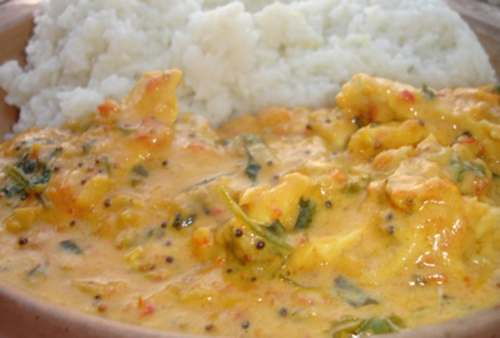
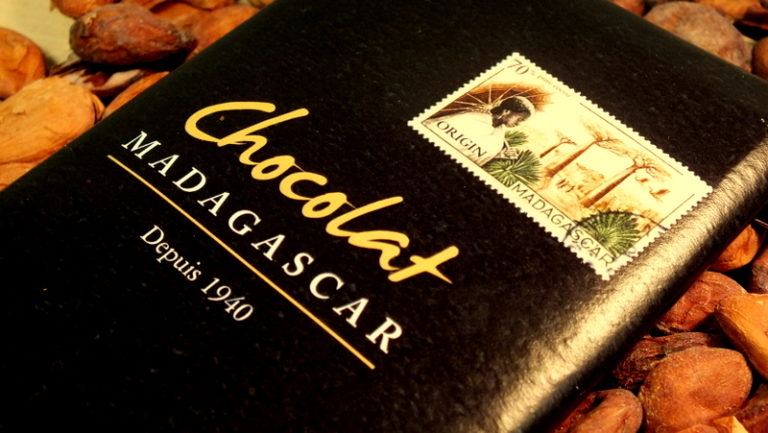




 Villa Sibylle Antananarivo (Madagascar)
Villa Sibylle Antananarivo (Madagascar)

